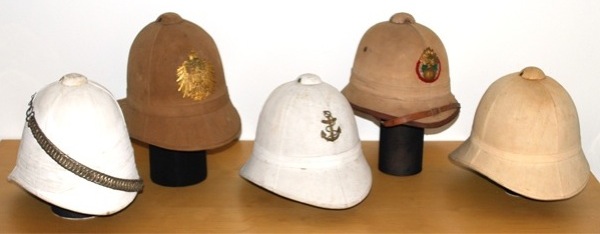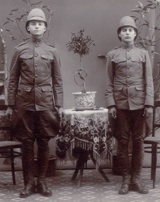Origins of Summer Uniforms

By the second half of the 19th century uniforms were easier to make, and thus summer uniforms could be manufactured to help keep soldiers cool.
As summer is in full swing in North America there is generally the question, “is it hot enough for you?” And for American and allied forces serving throughout the world, in regions where the sun always seems to be shining, it can be downright roasting! This is especially true if there is a lot of gear to lug. Of course, many would say soldiers have always had to face the heat.
{default}In fact many uniform books are quick to point out that uniforms in past eras tended to be hot and uncomfortable. This, the same sources have repeated over the years, eventually led to military commanders realizing that summer uniforms were needed. But is this in fact an over simplification of the facts?
While it is true that various nations, notably Great Britain, the United States and Spain introduced lightweight uniforms in the second half of the 19th century, it could be argued that such innovations only came when they were needed, and more importantly when it was finally practical. A quick examination of fashion in the 16th through 19th centuries will show that civilian clothing was generally not any more practical in warmer climates than the military attire of the day.
Thus, the notion that generals didn’t care if their men were hot is simply not true, because any clothing of the era would have been uncomfortable. Additionally, while many are quick to point out that global warming is a modern phenomenon, another “convenient” truth is that global warming may have gotten a kick-start from the industrial revolution some 150 years ago.
 More importantly, scientists are now better able to understand an event that has been labeled the “Little Ice Age,” which was a cooling that occurred following what is now known as the “Medieval Warm Period.” Thus, the warming that no doubt encouraged exploration by Nordic travelers to head west, which may have led to the discovery of Greenland and even North America several centuries prior to Christopher Columbus, was followed by a period of cooling. The Little Ice Age (LIA) is typically accepted to have lasted from the 16th century to around the middle of the 19th century. And although the LIA was originally thought to have been a global phenomenon, there is a new theory that it may have been limited mostly to the northern hemisphere.
More importantly, scientists are now better able to understand an event that has been labeled the “Little Ice Age,” which was a cooling that occurred following what is now known as the “Medieval Warm Period.” Thus, the warming that no doubt encouraged exploration by Nordic travelers to head west, which may have led to the discovery of Greenland and even North America several centuries prior to Christopher Columbus, was followed by a period of cooling. The Little Ice Age (LIA) is typically accepted to have lasted from the 16th century to around the middle of the 19th century. And although the LIA was originally thought to have been a global phenomenon, there is a new theory that it may have been limited mostly to the northern hemisphere.
Of course, this would include most of Europe. This is worth noting because it was also during this same period of time that the European powers began to create their various standing armies. This is also the period when traditional uniforms were introduced and evolved. Likewise, it is also worth noting that in the Classical Era uniforms were created to provide better comfort for the soldiers. A glance at the Roman, Byzantine and later Ottoman attire shows that these armies wore clothing that was suitable for warm weather climates.
[continued on next page]

